Oyster mushrooms are a delicate and tender treat. For many, these succulent morsels are worth their weight in pearls. Unfortunately, their exorbitant price tag is about as attractive as day-old seafood.
The good news is, you don’t have to pay it.
With a bit of know-how and some elbow grease, you can forage your own oysters. Once you learn how to identify oyster mushrooms and distinguish them from common look-alikes in the field, you’ll be able to enjoy these fantastic fungi all year long without breaking the bank.
How to Identify Oyster Mushrooms
Common oyster mushrooms are known scientifically as Pleurotus ostreatus. They are named for their oyster-like shape, though in my experience, this is not enough to make a positive identification.
We need to get up close and personal to tell the pearls from the plastics. That starts with appearance, but factors like growing conditions and habitat can give us more clues.
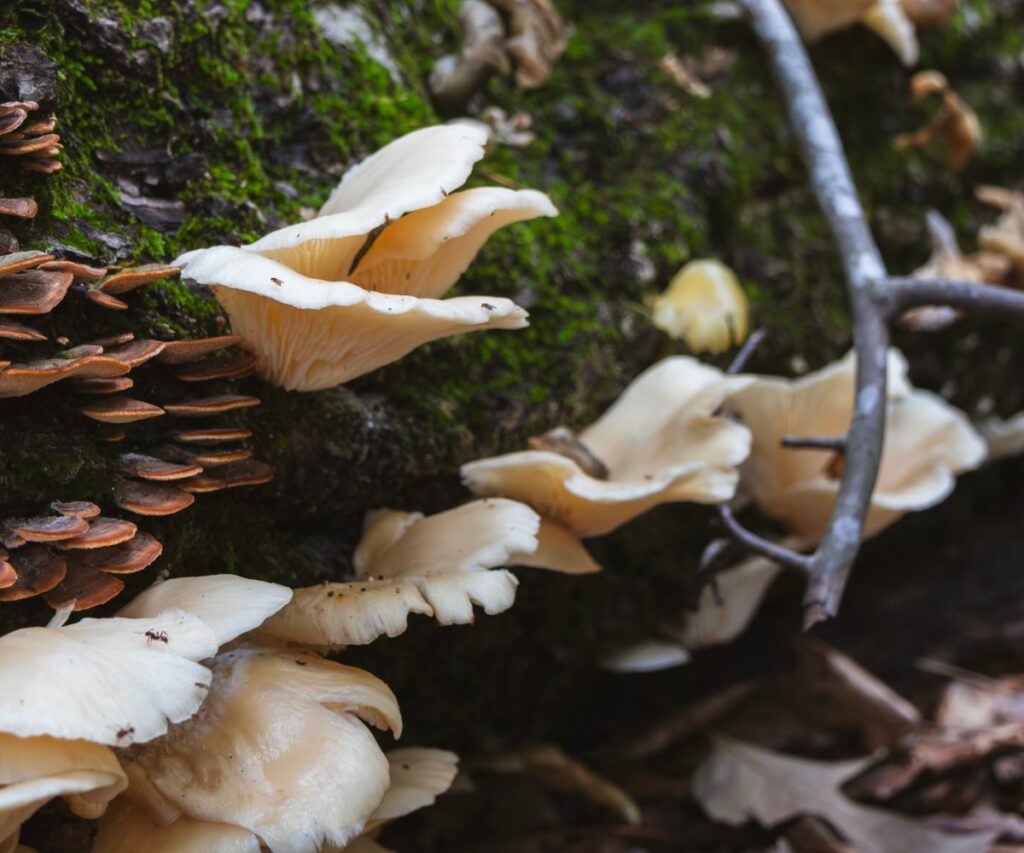
Appearance
Oyster mushrooms sprout in clusters, usually forming fanning brackets on their substrate. Their shape, color, and size can vary significantly, with specimens ranging from one to eight or more inches across.
- Cap: The cap is fan- or kidney-shaped and may be creamy, gray, or light brown. It can be concave or convex, with some specimens forming trumpet-like shapes. Caps are smooth and lack color zonation. Margins may be wavy, furled, or lobed depending on growth stages and environmental conditions.
- Pore surface: Oysters have distinct gills that are usually the easiest and fastest way to make a positive ID. Like chanterelles, their gills are decurrent, meaning they run down the stem. But unlike chants, oysters have true gills — they separate easily when you fan them with your fingers.
- Stalk: Oysters have a weak stalk at best. It’s usually a short, thin stub growing off-center from the side of a log. However, those growing on top of logs have a sturdier and more well-developed stem base to hold them upright.
- Flesh: The flesh is white or off-white.
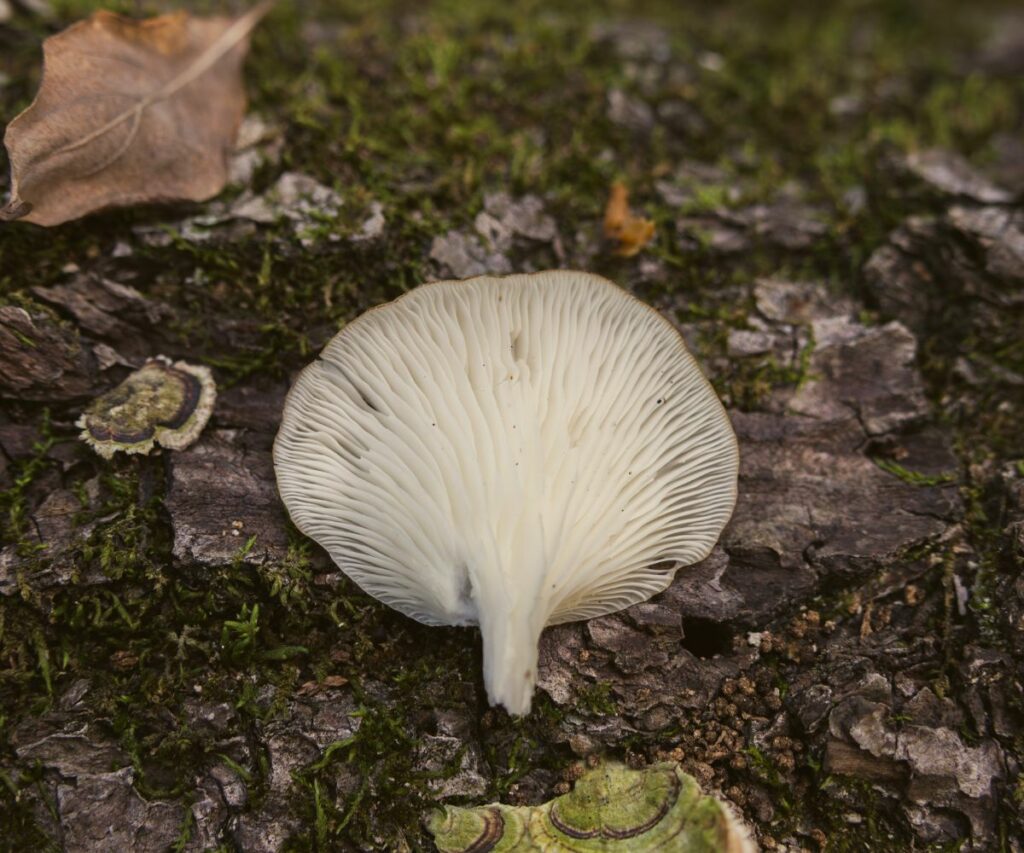
Species Variation
There are actually a few edible species within the Pleurotus genus that we call oysters. While P. ostreatus is well-known as the “pearl oyster,” there are others you might see in the forest, depending on where you live. All of them are edible and delicious!
- P. citrinopileatus: Also known as the golden or yellow oyster, this nonnative species has escaped controlled cultivation and now runs rampant through North America. Aside from its bright yellow color, you can recognize P. citrinopileatus by the distinct concave cap that often becomes trumpet-like in maturity. It fruits in the summer and is a small species, rarely reaching more than an inch or two across
- P. pulmonarius: More commonly known as the phoenix oyster, this species is a paler P. ostreatus cousin differentiated mainly by the season — it favors warmer weather and sprouts as early as April. Caps are creamy white and may grow quite large, while margins are generally wavy and irregular. This species doesn’t discriminate and will grow on both pine and hardwood.
- P. populinus: This species is known as the aspen oyster. It is nearly identical to the phoenix but grows only on aspen and cottonwood trees. Aspen oysters grow primarily in northern or mountainous regions where their preferred host is present.
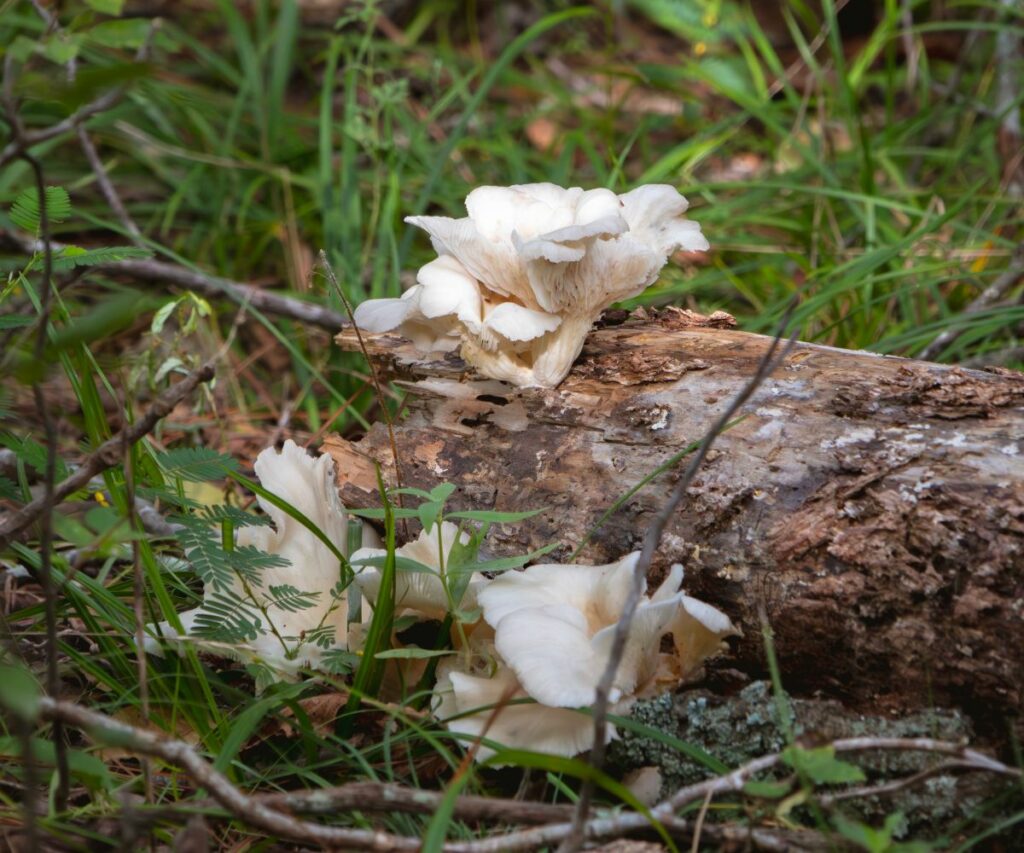
It’s important to remember that many varieties of oyster mushrooms in the grocery store are not native to North America. While the yellow oyster has managed to break free of commercial grow labs and propagate freely here, other famous species, such as blue, pink, and king oysters, haven’t.
So, even though these varieties may be available for purchase, there’s no hope of you stumbling across a patch of them while foraging in the US. At least, not yet. In a few more years, we might see additional exotic species in our native forests.
Texture, Taste, and Smell
The texture depends a lot on the size and general hardiness of the mushroom. Healthy, fresh oysters have sturdy flesh, though larger specimens tend to become flimsier around the margins where there is less support.
They smell slightly sweet and earthy, like fennel or anise. Some people can detect a mild fishy odor, but if this smell is potent, it likely signifies the specimen is past its prime.
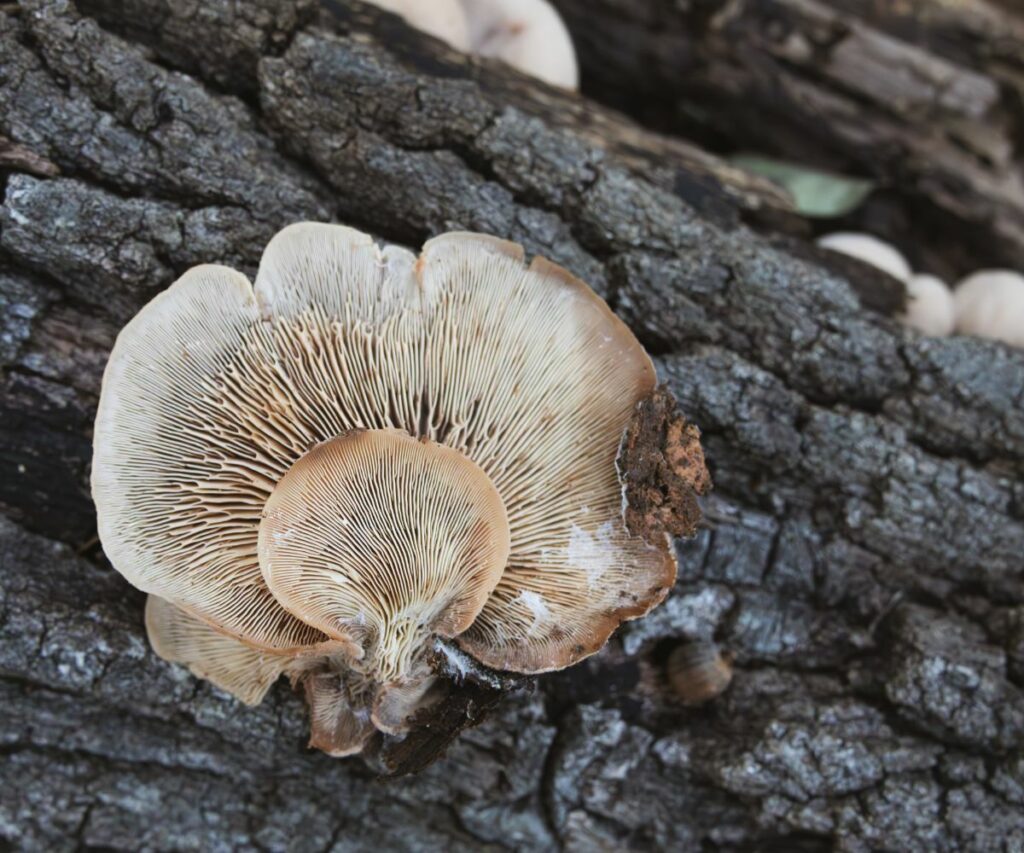
Oysters taste wonderful. When cooked, the texture is akin to scallop or crab — delicate and slightly chewy with a very subtle flavor. Their firm yet tender flesh takes on a great sear, and larger flushes are perfect for making mushroom jerky or pickling.
Habitat
Oyster mushrooms are saprobic decomposers and grow directly from the wood of dead and dying trees. Because species differ in preferred hosts, you can find them on pretty much any type of hardwood —though P. ostreatus prefers beech and oak.
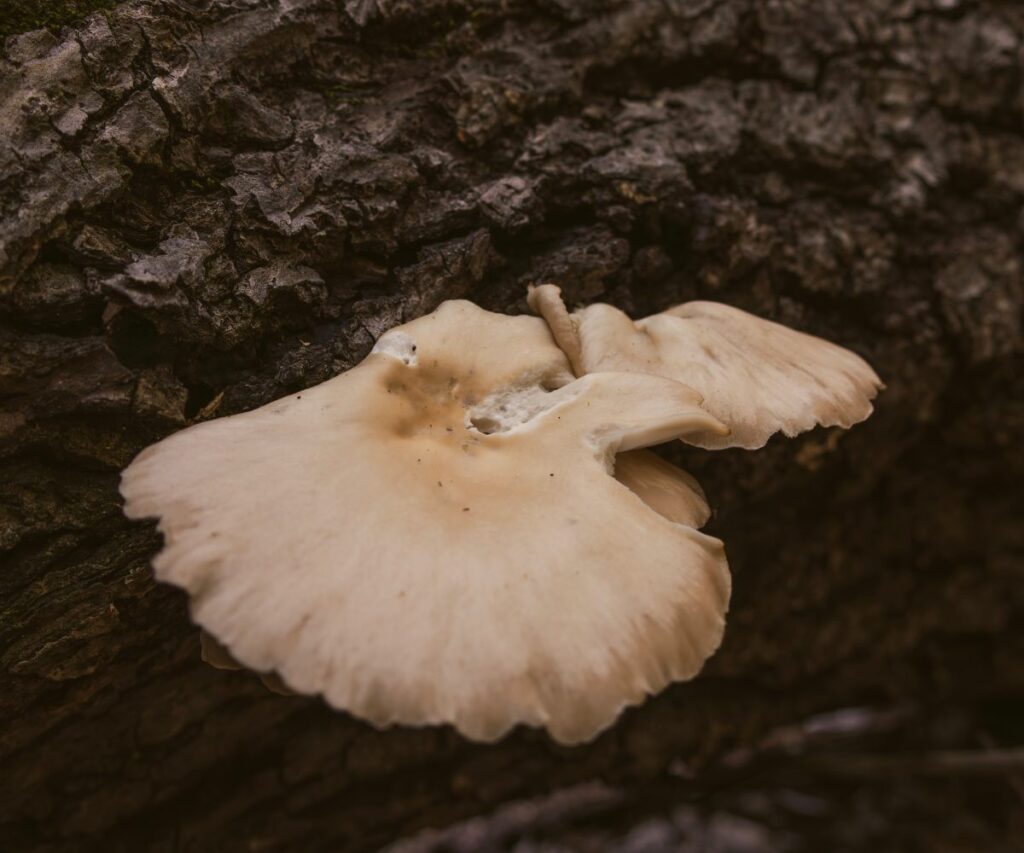
Various species grow in subtropical and temperate climates, with most North American varieties preferring deciduous hardwood forests. You’ll usually find them sprouting from the sides of downed logs, though occasionally, they grow on top of logs or from standing deadwood.
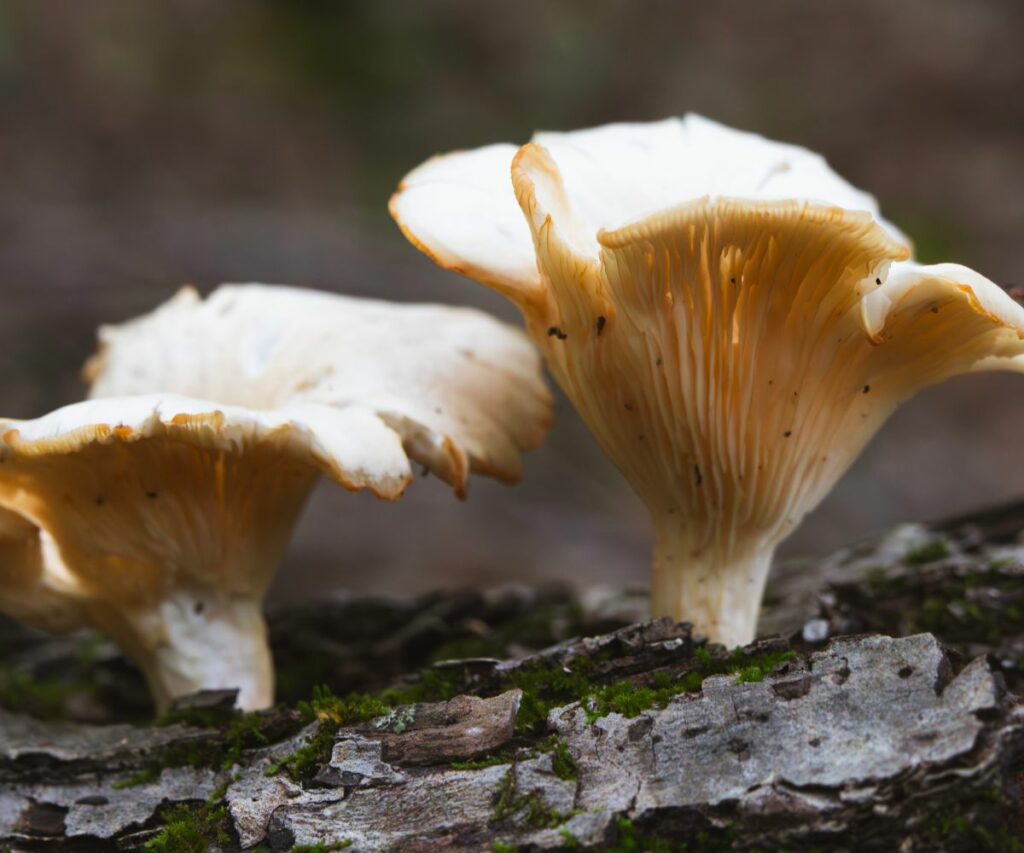
Season and Growing Conditions
The pearl oyster emerges as cold weather sets in, usually appearing from October to March or April. You can find it throughout the winter in some areas, though it may disappear during hard freezes and long periods of snowfall.
Since other species favor warmer weather, it’s possible to find different varieties regardless of season. Between pearl and phoenix oysters, I find flushes all year long here in the Ozarks.
It’s good to look for oysters in old-growth forests where many trees have fallen. Be sure to check beneath logs and in the darker crevices of rotting branches because oysters crave shade and a damp environment.
This mushroom is versatile, resilient, and also pretty hardcore. It is not only an agent of decay but also a nematophagous fungus — an opportunistic carnivore. When an unfortunate nematode worm enters the oyster’s tasty flesh to chow down, the fungus secretes toxins that kill it. Then, it sucks nutrients like nitrogen from the remains.
This unique characteristic allows oysters to thrive even when conditions are not optimal. They’re common in many regions, making them a solid addition to your foraging bag no matter where you are.
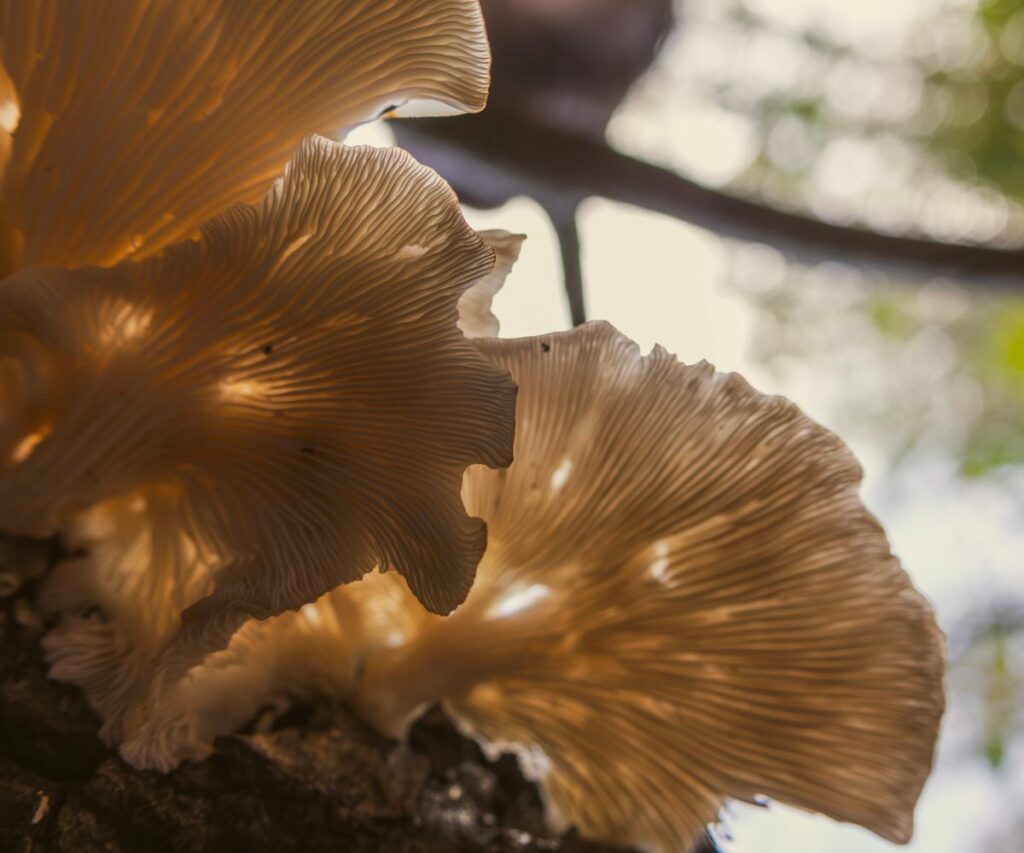
Identifying Common Look-Alikes
Some guides claim oyster mushrooms are among the easiest to forage because they have no toxic lookalikes. After eating an oyster doppelganger and suffering the consequences, I found this to be decidedly untrue.
Rather than make my foolish mistake, familiarize yourself with the following look-alikes and avoid them at all costs.
Oysterling
Oysterling mushrooms are members of the Crepidotus genus, with various species differentiated by color and spore print. They sprout from logs and feature decurrent gills resembling oyster mushrooms, but Crepidotus species are much smaller and may be rounder with wide-set gills.
Most varieties have distinguishing features that can be used to tell them apart from true oysters. One variety is known as a “peeling oysterling” and can be distinguished by its separable cap cuticle — you can literally peel it off. Another is called a “scaled oysterling” because of its scaled top.
Adding to the confusion, Panellus serotinus is known as an “olive oysterling” or “late fall oyster.” In Japan, it is cultivated for food, but some sources caution it could be carcinogenic. The olive oysterling can be differentiated by its green color.
Angel Wings
Known by the Latin name Pleurocybella porrigens, the angel wings mushroom features a pure-white body that fans out and rises upward. While it was once considered edible, a series of fatal poisonings in Japan has raised many questions about this mushroom — imbuing its name with a macabre irony you don’t want to explore.
Angel wings have small fruiting bodies that grow in clusters and sport narrow decurrent gills like oysters. The two closely resemble each other, but there are a few tricks to tell them apart. Angel wings usually lack a stem and are a much purer, brighter white than oysters.
The body is thinner and flimsier and can even appear translucent when the light hits it just right. In contrast, oysters are larger and meatier. If you’re ever confused, examine the substrate. Angel wings only grow on conifer trees, while oysters usually favor hardwoods.
Deadly Galerina
The deadly galerina, or Galerina marginata, is an unassuming little brown mushroom. These saprobic fungi sprout in clusters from the bark of deadwood, with rounded caps that gradually become flatter and sometimes develop wavy margins.
To the novice forager, a mature patch of deadly galerina could resemble a treasure trove of brown oyster mushrooms when viewed from above. However, the resemblance disappears immediately upon closer examination. Deadly galerina have a long, thin stem. Their gills are not decurrent but end where the cap meets the stalk.
Hungry for oysters? Me, too! No matter when you’re reading this, chances are a patch is growing near you. Now that you know how to identify oyster mushrooms correctly, you’re all set to hit the forest and forage your heart out.


Good article. I would only suggest elaborating on the look-alikes. If your target audience is worldwide, mentioning look-alikes in Japan is fine, but if those are only found there, a word about that would be useful information. I am not an expert by any means on wild mushrooms, but I am not aware of a look-alike in Eastern North America. If true, that would be very useful to those of us who live there. Mention of the one look-alike in the Northwest US would also be useful, maybe even life-saving.
My intent isn’t to criticize, as this is a good basic article on the subject, but a little more depth would make it much more useful.
Thanks for the article.
There was no mention of oysterlings, an oyster mushroom lookalike, in this? Should probably add one
Excellent point, Jeff. Thanks for bringing that to my attention and I’ll see what I can do.
Thanks for the thorough info. Mushrooms are amazing!
Very timely-I’m eating Oyster mushrooms tonight! Bought them…next time, should go foraging.
I find these articles informative and enjoyable. Keep them coming